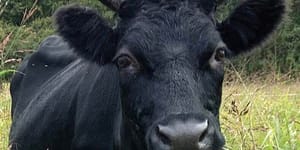Pinching Flowers to Prolong Bloom: When and How

This time of year, flowers are in full bloom! To get the most out of them, try pinching flowers to prolong the bloom. This may sound simple enough, but there’s more to this trick than you might think.
The following gardening tip is from The Flower Farmer by Lynn Byczynski.
Pinching Flowers to Prolong Bloom
Pinching can be used to increase yield and to prolong bloom. It can be an important strategy for the commercial cut-flower grower, so it’s useful to understand how and when to do it.
When growers talk about pinching flowers, they are referring to the practice of cutting off the top of a flower stem. A “soft pinch” removes just the growing tip (officially called the apical meristem) and less than an inch of stem. A “hard pinch” removes several tiers of leaves and several inches from the top of the stem. When you pinch a plant, it sends out new stems below the spot where you pinched it.
By cutting off the growing tip before it has a chance to bloom, you stimulate the plant to branch and send up multiple stems that bloom at the same time. An unpinched snapdragon, as an example, will send up one flower stem. A snapdragon that is pinched when young will send up multiple flowers. It may seem obvious that 
That’s because there’s a trade-off in height and earliness—unpinched snaps are taller and bloom earlier than pinched snaps. Pinching, then, can be a way of extending the bloom time of a specific flower; you can leave some unpinched for an early crop and pinch the rest for later blooms.
The concept behind pinching is pretty simple, but the practice gets complicated.
Some flowers should never be pinched. Those that grow from a rosette of leaves, such as statice, don’t benefit from pinching and will, in fact, become misshapen if you do pinch an emerging stem. Others get too tall and lanky if you don’t pinch them; chrysanthemums and dahlias are good examples. Sometimes seedlings start to bloom in the plug tray, and you have to pinch off the flowers before planting them outside so they will send up new flower stems. (It’s often easiest to shear off the tops of the whole flat with sharp scissors.) Sometimes nature, in effect, pinches your young plants for you: When wind, cold, or hail kills the growing tip, the plant will often branch lower on the stem and rebound, looking much fuller.
When your information reference recommends pinching, it usually will tell you whether you should do a hard or soft pinch, and at what stage in the plant’s development. If there is no mention of pinching, don’t be afraid to experiment on your own. Pinch one side of the bed and leave the other side unpinched, and see if it makes a difference.
As with so many things about flowers, local conditions will determine the best practices. The important thing to remember is that plants want to grow, and you probably aren’t going to hurt them by pinching them—or by not pinching them. Even if you forget to pinch, you can usually compensate by cutting a long stem of the first flower that blooms in the center of the plant. That effectively removes the apical meristem, forcing the plant to send out branches lower down on the stem. Those eventually will grow just as tall as the central stem, and you’ll still get multiple blooms from each plant.
Recommended Reads
Recent Articles
What’s so great about oyster mushrooms? First, you can add them to the list of foods that can be grown indoors! They are tasty, easy to grow, multiply fast, and they love a variety of substrates, making oyster mushrooms the premium choice. The following is an excerpt from Fresh Food from Small Spaces by R. J.…
Read MoreEver heard the phrase, “always follow your nose?” As it turns out, this is a good rule of thumb when it comes to chicken manure. Composting chicken manure in deep litter helps build better chicken health, reduce labor, and retain most of the nutrients for your garden. The following is an excerpt from The Small-Scale Poultry…
Read MoreIn her book, The Art of Science and Grazing, nationally known grazing consultant Sarah Flack identifies the key principles and practices necessary for farmers to design, and manage, successful grazing systems. This book is an essential guide for ruminant farmers who want to crate grazing systems that meet the needs of their livestock, pasture plants,…
Read MoreWant to start your own medicinal herb garden? Passionflower, lemon balm, and goldenseal are great places to begin! These herbs are jam-packed with medicinal properties and easy to grow in a majority of climates.
Read MoreThis long-lived perennial legume is used for forage and erosion control. Kudzu is edible with many medicinal uses and other applications. Pollinators of all kinds love its prodigious lavender blooms!
Read More







